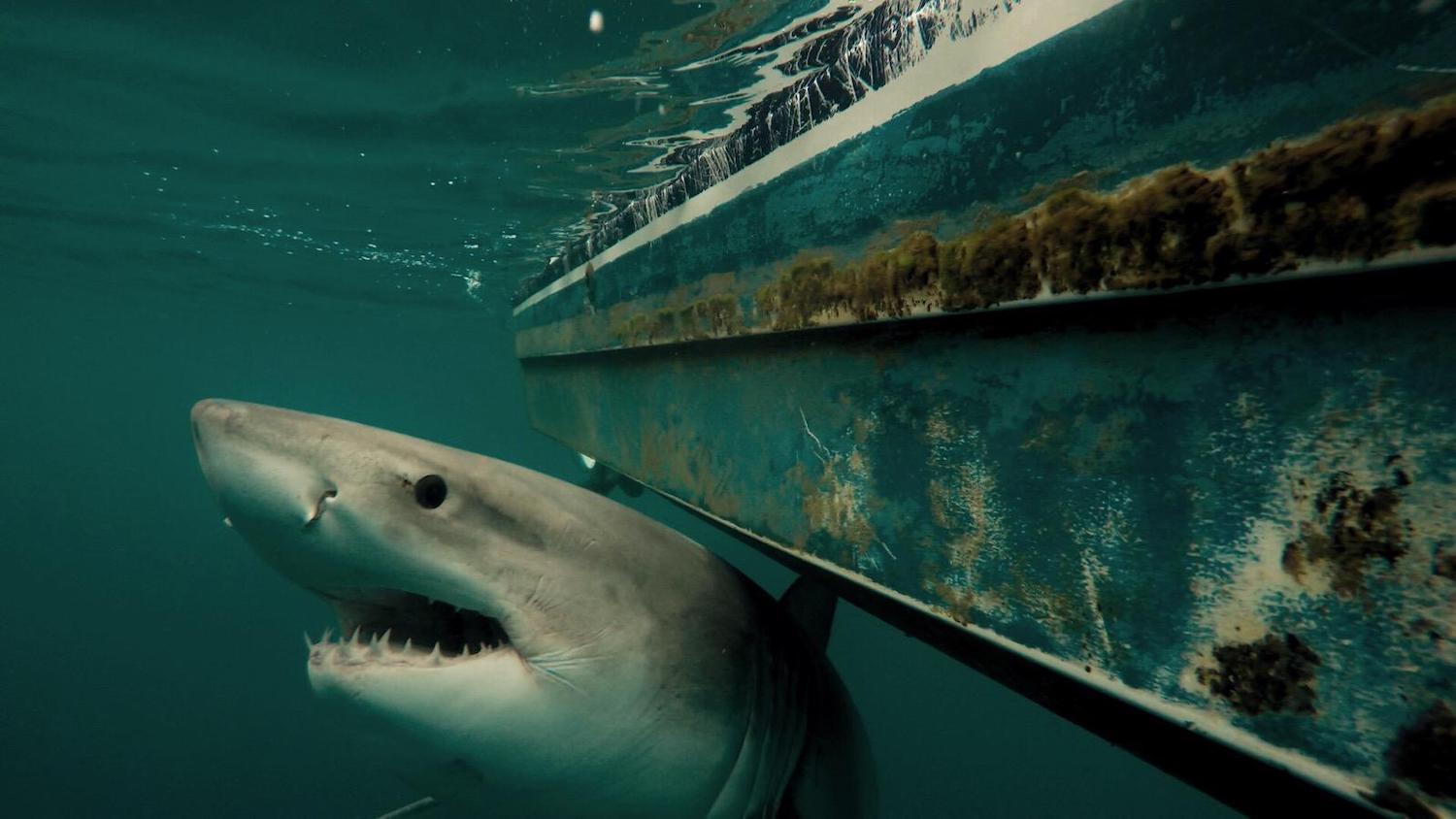
Reese “Chip” Michalove
Late last month, the National Marine Fisheries Service (NMFS) sent out a newsletter featuring a potentially surprising piece of advice: For a sustainable source of protein, try eating shark sometime. NMFS is an arm of the federal science agency, National Oceanic and Atmospheric Administration (NOAA), and it’s responsible for protecting fish populations and their ocean habitats.
“While overfishing has greatly depleted some shark populations overseas, U.S. shark fisheries are some of the most sustainable in the world,” it read. I did a double take, racking my memory for the last time I saw shark as an option at the grocery store or on a restaurant menu. The press release seemed to run contrary to my general sense that shark populations were in jeopardy everywhere.
In August, for example, scientists warned that levels of the popular shortfin mako shark in the Atlantic ocean—for which NMFS has catch limits—are so overfished that they would require until 2045 to fully recover, even if a total harvesting ban were enacted. In July, the Animal Welfare Institute published its annual directory of restaurants whose menus include dishes made from shark fin, rising demand for which contributes to declining shark stocks. And in 2013, researchers issued this dire warning: Commercial fisheries kill approximately 100 million sharks every year, far faster than the rate at which sharks can repopulate.
So why is NMFS encouraging eaters to eat more shark? Pointing to its strict fishing quotas, the agency suggests that eaters buying American-caught shark can now do so without guilt.
“[U.S. shark fishermen’s] decades of stewardship should be recognized at the market,” NMFS specialist Randy Blankinship writes in the release. NMFS notes that none of the 43 Atlantic sharks species that it manages are in danger of extinction as defined by the Endangered Species Act.
People all over the world consume shark meat regularly. Eaters in Peru enjoy it in traditional ceviche. Iceland’s national dish is a fermented shark called hákarl that has been compared to both cheese and urine. Fin-based dishes like shark fin soup have roots that historians have dated back to China’s Ming Dynasty. Though consumption data is hard to pin down, NMFS estimates that U.S. fishermen landed more than 28 million pounds of shark in 2017—8.6 million pounds of which were exported—the most recent year for which it has fishing data.
Such catch numbers may seem miniscule when compared to the 657.3 million pounds of Pacific cod or 1 billion pounds of salmon landed by U.S. fishermen that same year. Still, it’s not negligible, falling in the general ballpark of mackerel (30.4 million pounds) and halibut (26.5 million pounds).
There’s a remarkable diversity among the shark species that American fishermen catch, and just a tiny proportion resemble the classic, Jaws-inspired conception of the fish. Of total U.S. shark catches, about 25 million pounds were comprised of dogfish, a small shark named for its proclivity to hunt for prey in big packs, as dogs do. The Atlantic sharpnose shark and the blacktip shark each made up over half a million pounds in landings, while other notables species include 444,000 pounds of Atlantic shortfin makos, 61,000 pounds of hammerhead, and almost 2,000 pounds of blue shark.
Sharks are a subcategory of fish, but what distinguishes them from more common seafood aisle options is their unique role as apex ocean predators. They are the kings of marine food webs, with no natural predators of their own—besides, perhaps, other sharks. This unique position—in addition to their long lifespans and slow reproductive cycles—means that reckless human fishing of sharks can have severe ripple effects throughout the ocean ecosystem (e.g., spikes in prey populations and subsequent declines in species lower in the food web). What does this all say about NMFS’s encouragement that we eat more shark? For some advocates, it’s a bad suggestion.
“Sharks simply breed too slowly,” says Marie Levine, founder of the Shark Research Institute conservation group. “There is no such thing as sustainable harvesting of sharks.”
Reese “Chip” Michalove, a fisherman and charter captain based in South Carolina, concurs. He releases sharks back into the ocean after he catches them, a common recreational fishing practice. Five years ago, Michalove tells me, he could catch 50 to 60 tiger sharks. This past year, he’s only caught six. Based on his observations, he believes that many other sharks are facing similar declines. (The International Union for Conservation of Nature currently lists tiger sharks as “near threatened,” meaning that the species could face risk of extinction in the near future.)
But other conservationists like Sonja Fordham—founder of Shark Advocates International—argue that total prohibition is neither practical nor necessary. Fordham sits on the NMFS advisory panel for highly migratory species, including sharks. She believes that there should be fishing bans on certain species, such as the Atlantic shortfin mako, depending on factors including current populations and reproduction rates. However, she argues, NMFS guidelines remain a standard bearer for sustainable shark fishing globally, and they can serve as an example of shark management for countries where conservation isn’t a priority.
 Reese “Chip” Michalove
Reese “Chip” Michalove Michalove releases sharks back into the ocean after he catches them, a common recreational fishing practice
“Much of sharks’ futures are in the hands of developing countries that are fishing sharks for food and subsistence,” says Fordham. “It’s unlikely, unrealistic, and not particularly sensitive to just assume that developing countries are going to stop all shark fishing, when they have a need for protein and livelihood.”
Fordham’s point speaks to the interdependent nature of fisheries management across the world. Unlike land animals, maintaining wild seafood populations requires international cooperation, especially when it comes to migratory species like sharks. Annual NMFS catch limits are developed with consideration for current population estimates, under- and overharvests in past years, and guidance from the intergovernmental body that manages Atlantic ocean fisheries, called the International Commission for the Conservation of Atlantic Tunas (ICCAT). In October, comments closed on NMFS’s proposed 2020 shark catch limits. The agency will issue a finalized quota later this year. This month, ICCAT member nations, including the United States, will convene in Spain to update global shark catch guidelines.
One of the most contentious elements of shark fishing is finning—the practice of catching sharks, cutting off their fins, and discarding the rest of the fish overboard. Producers are economically incentivized to engage in finning because of the high price tag that fins command relative to shark meat. The Food and Agriculture Organization of the UN estimates that producers worldwide exported 18,909 U.S. tons of shark fin worth $438.6 million in 2011, the most recent year for which global data are available. In that same year, more than seven times as much shark meat was exported—121,641 tons of it specifically—but its total value was a relatively modest $379.8 million. Shark fin is highly sought-after for its slippery texture—which is considered a desirable element in Asian cuisine—primarily among wealthy Chinese eaters in China and abroad, who consume it in soups and dumplings.
To combat the practice of finning, President Bill Clinton signed the Shark Finning Prohibition Act into law in 2000. The legislation required that all fins to be brought to shore with their corresponding fish carcasses. It doesn’t, however, prevent processors from removing fins and selling them separately.
In the years that followed, at least 20 countries have followed suit by passing similar laws. A dozen U.S. states and three territories have gone one step further, passing legislation to ban the sale and distribution of shark fins, regardless of how its corresponding shark was caught. In 2015, the world’s largest delivery company, UPS, announced it would stop processing shark fin shipments. At the federal level, Democratic Senator Cory Booker of New Jersey has repeatedly introduced legislation to ban the shark fin trade altogether, arguing that doing so would buoy the country’s standing in shark conservation efforts internationally.
“Abolition of the shark fin trade in the United States will remove the United States from the global shark fin market and will put the United States in a stronger position to advocate internationally for abolishing the shark fin trade in other countries,” Booker’s proposal reads.
NMFS’s defense of U.S.-caught shark may have highlighted its conservation efforts, but it also serves as marketing for the industry as a whole. The landed value of sharks in the U.S. was more than $7.2 million in 2017—that’s the monetary worth of the fish before it’s processed, packaged, and marked up for consumers at the retail level. The retail value of the processed shark meat would be many millions higher.
“Once upon a time, nobody was eating [shark]. Now, everybody wants to try it,” says Anshu Pathak, founder of the Exotic Meat Market, an online store that offers two types of shark in addition to delicacies like emu, armadillo, and bobcat. Pathak has been selling shark meat for at least eight years. He declined to share sales data but said that demand for shark has increased by 20 to 30 percent in recent years. I asked him to describe the experience of eating shark.
“It does not taste like a fish,” Pathak says. “Cooked right, it is like a like a steak, like pork, honestly.” Shark meat has also been compared to chicken and alligator. According to experts, sharks can also contain high mercury levels, and because the fish urinate through their skin, should be soaked before cooking.
Whether you request shark the next time you visit a seafood market—assuming you can find it—will likely depend on a variety of factors, including your personal taste and sense of culinary adventure. But can you really “rest assured” that American-caught sharks are an environmentally sustainable choice, as NMFS suggests? The reality appears more ambiguous than that—but maybe that shouldn’t stop you from trying it.
“Fisheries for shark species can be sustainable if they’re well managed,” Fordham says. “It’s not perfect, but it’s a much better situation than it has been.”










